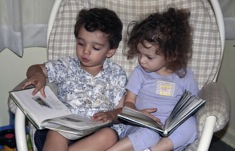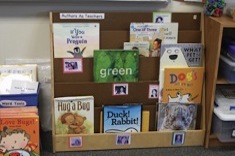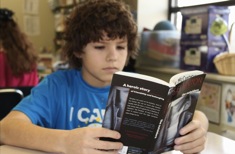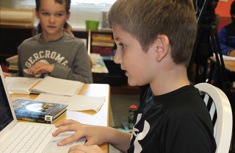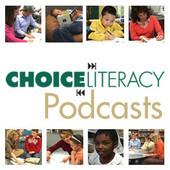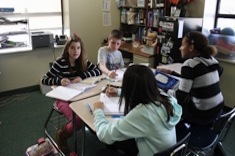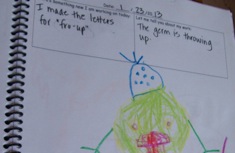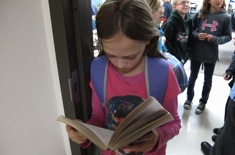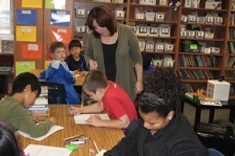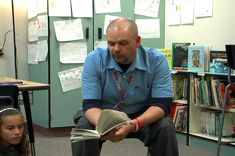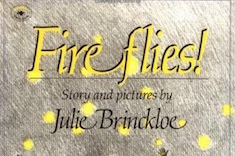Articles
Here is where you’ll find all the latest print features from our contributors. If you’d like to browse specifically by grade level, topic, or contributor, you can use the links in the right sidebar.
Latest Content
How to Eat an Elephant One Bit(e) at a Time: Reading Complex Texts
Maggie Beattie Roberts and Kate Roberts present a step-by-step process for close reading in the middle and high school grades involving multiple passes through the same text.
Lessons from Listening to Toddlers Read (Home Is Where the Books Are Series)
What can you learn from having toddlers "read" to you? Plenty, as Meghan Rose soon discovers.
Chris Lehman and Kate Roberts on Close Reading (PODCAST)
Franki Sibberson chats with Chris Lehman and Kate Roberts about close reading in this 30-minute podcast. Chris and Kate are the authors of Falling in Love with Close Reading: Lessons for Analyzing Texts — and Life from Heinemann.
Mentor Texts for Writing Endings
One goal of many primary teachers is to help students finish their drafts with an ending other than “The End” (or “they lived happily ever after”). Katie DiCesare shows her first graders many alternative examples, and she begins early in the year.
Literacy Contracts: Introduction
Megan Ginther and Holly Mueller present Reading Contracts, a system for middle and high school teachers that involves students contracting to complete specific texts and tasks each month.
The Cure for Value-Added Grief? Teacher Research
Gretchen Taylor goes through the stages of "value-added grief" when her sixth-grade team receives disappointing test scores from the state. Teacher research helps her find joy again in her classroom, as well as some useful strategies for helping a group of struggling readers.
Using Pinterest for Professional Development
Franki Sibberson finds Pinterest is a useful tool for professional development.
Helping Students Evaluate Online Video for Research
Even if your district is blocking web video now, it's not going anywhere. As time goes on, schools will rely more and more on video available from the Internet for research and learning. Bill Bass has practical advice for helping middle and high school students assess everything from suspect sources to appalling comments on the Wild Wild Web.
Using Technology to Connect Young Readers and Writers
Julie Johnson reflects on how technology is changing her own reading community, and builds on this knowledge to connect readers and writers in her classroom with others through the Internet.
The Minimalist: Essential Texts for Kindergarten Teaching
Max Brand develops a "Swiss army knife" booklist of texts that he can't live without when teaching young learners.
Global Read Aloud with Pernille Ripp (PODCAST)
Franki Sibberson chats with Pernille Ripp about the Global Read Aloud initiative.
Laundry Line Luxuries
Suzy Kaback writes about the pleasures of slowing down and being inefficient sometimes in teaching and relationships.
Reimagining Reading Notebooks
When premade reading notebooks no longer fit into her reading budget, Katherine Sokolowski comes up with a unique design starting with generic notebooks, and in the process figures out what’s most important to include.
In Defense of Dictation
Leslie Woodhouse finds dictation is a critical tool for understanding young writers and their sense of story.
What Data Will You Be Collecting?
Tony Keefer explains why attitudinal survey data is important to collect early in the year, and shares different reading surveys he uses with students to understand their needs in the first six weeks of school.
Rethinking the Assessment Binder
Franki Sibberson’s dilemma? How to file every evaluation so it is organized and accessible (since she never knows when someone might ask for it), while still finding a way to keep the assessments she needs every day at her fingertips.
“My Ideal Bookshelf”: Books that Educate Us
Ellie Gilbert shares an activity that is a terrific way to get to know your new students. Although Ellie works with high school students, this activity can be adapted for the younger grades.
Routines to Build Independence Early in the School Year
Katie DiCesare explores how to develop routines early in the year, and includes advice to give to parents to build the home/school connection around expectations for independence.
Daily Routines: Finding Time for What Matters
Ann Marie Corgill provides some guiding questions to help teachers figure out priorities in their schedules for daily routines.
First Read Alouds (ROUND-UP)
Choice Literacy contributors share their picks for the first read aloud of the year.
New Teachers: The Power of Inexperience
Sometimes a lack of experience is a gift worth embracing. Michelle Kelly considers all the strengths new teachers bring to schools, from their comfort with technology to genuine enthusiasm.
Planning a Read Aloud Sequence to Launch the School Year
Tony Keefer shares the three essential questions that guide his process of selecting first read alouds.
Fireflies and Background Knowledge
Karen Terlecky writes about the importance of building understanding before more complex read alouds.
A Summer Reading Camp for Middle School Students
Katherine Sokolowski has tips for a "book club" summer reading camp for middle school students.
Are You Excited About Next Year?
Kelly Petrin finds a bare classroom at the end of the year leads her to improvise with stuffed animals and literacy with her preschool students. The mix of play and reading is so successful that it changes her planning for the fall.
Using Instagram to Sell Summer Reading Options
Tony Keefer taps into the Instagram craze among his students, and finds it is an ingenious tool for encouraging summer reading while kids are on vacation.
Grateful Journals
Beth Lawson began her own gratitude journal as a troubled teen, and finds that the daily routine of Grateful Journals is a powerful tool for reflection and building community in the intermediate grades.
Teacher Resume
Even if you have no plans to apply for a new job anytime soon, creating a resume can be a wonderful catalyst for defining who you are and what you value. It’s also a great document to share with parents and new students. Amanda Adrian explains its creative uses.
SPREAD: Teaching and a Balanced Life
Are you spread too thin? Kelly Petrin uses the acronym SPREAD to remind herself regularly of what she needs to lead a balanced and joyful professional and personal life.
Word Nerds
What words are worthy of study? Amanda Adrian and Heather Rader explore that question with colleagues.
Browse Content By
Type
Category
- Assessment Tools
- Big Fresh Archives
- Booklists
- Choice Numeracy
- Classroom Design
- Common Core
- Community Building
- Conferring
- Content Literacy
- Digital Literacy
- English Language Learners
- Equity
- Family Relations
- Free Samples
- Guiding Groups
- Leadership
- Literacy Coaches
- Mentor Texts
- Minilessons
- New Teacher Mentors
- Podcasts
- Poetry
- Quote Collections
- Reading Strategies
- Self Care
- Struggling and Striving Learners
- Talking and Listening
- Teacher Study Groups
- Teaching Reading
- Teaching Writing
- Word Study and Vocabulary
Author
- Melissa Quimby
- Nawal Qarooni
- Gwen Blumberg
- Julie Cox
- The Lead Learners
- Hannah Tills
- Josie Stewart
- Ruth Metcalfe
- Mallory Messenger
- Becca Burk
- Jodie Bailey
- Vivian Chen
- Mary Brower
- Tiffany Abbott Fuller
- Stephanie Affinito
- Ruth Ayres
- Leigh Anne Eck
- Heather Fisher
- Shari Frost
- Julie Johnson
- Suzy Kaback
- Gigi McAllister
- Shirl McPhillips
- Melanie Meehan
- Cathy Mere
- Debbie Miller
- Tara Barnett and Kate Mills
- Tammy Mulligan
- Dana Murphy
- Bitsy Parks
- David Pittman
- Brenda Power
- Heather Rader
- Matt Renwick
- Mandy Robek
- Christy Rush-Levine
- Gretchen Schroeder
- Jen Schwanke
- Brian Sepe
- Katherine Sokolowski
- Stella Villalba
- Jennifer Vincent
Grade Level
Choice Literacy Membership
Articles
Get full access to all Choice Literacy article content
Videos
Get full access to all Choice Literacy video content
Courses
Access Choice Literacy course curriculum and training


